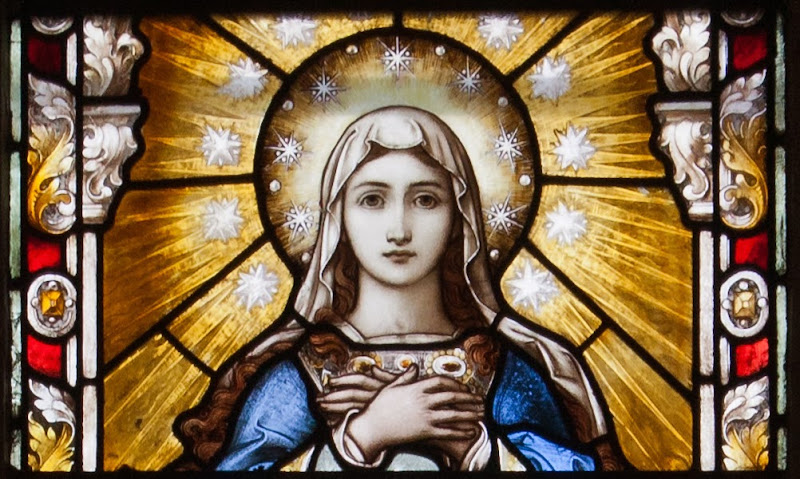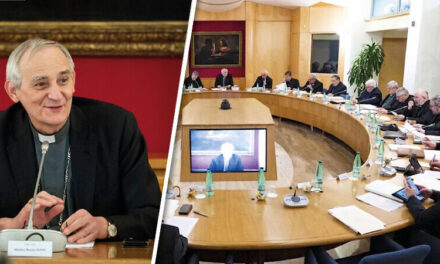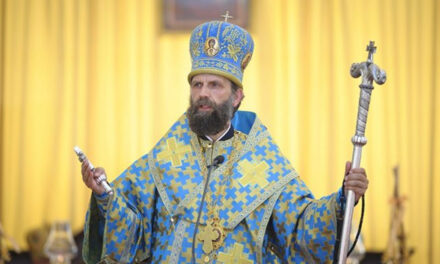"We Catholics address the Virgin Mary with many beautiful epithets when we pray to her: Mother of God, Holy Virgin, Mother of God, Blessed Mother, Immaculate Conception. However, for us Hungarians, our favorite address to Mary is this: Our Lady of Magyars. This address is based on significant events in our national history. Mother of God, Jesus Christ: Patroness and Protectress of Hungary. The country is His gift, but with the will of St. István, it is also his inheritance, his family and his property," wrote a happy Father János Karaffa in the booklet Regnum Marianum Imakilenced.
On December 8, the church does not celebrate the incarnation of Jesus, but the immaculate conception of his mother, Mary, which happened nine months before the birth of the Virgin Mary. We can easily calculate that nine months from December 8th, on September 8th, will be the feast of the birth of Mary, which we call the day of the Blessed Virgin Mary according to Hungarian tradition.
In the Eastern Church, Anna's Conception is the name of the holiday, which, according to the first written records, was celebrated on December 9 in the 8th century. In the Western Church, the holiday appeared in Naples and Sicily in the 9th century, but it was also observed in England at the beginning of the 10th century, probably at the urging of the Greek-born St. Todor, Archbishop of Canterbury. In Hungary III. It was naturalized by King Béla in the second half of the 12th century.
13–14. During the 19th century, the feast of the Immaculate Conception spread throughout Europe. XXII in Rome It was celebrated during the reign of János (1316–34). ARC. Sixtus added it to the Roman calendar in 1476, XII. In 1693, Ince extended the holiday to eight days, which XI. According to Clement's decree, it became a mandatory holiday in the 18th century.
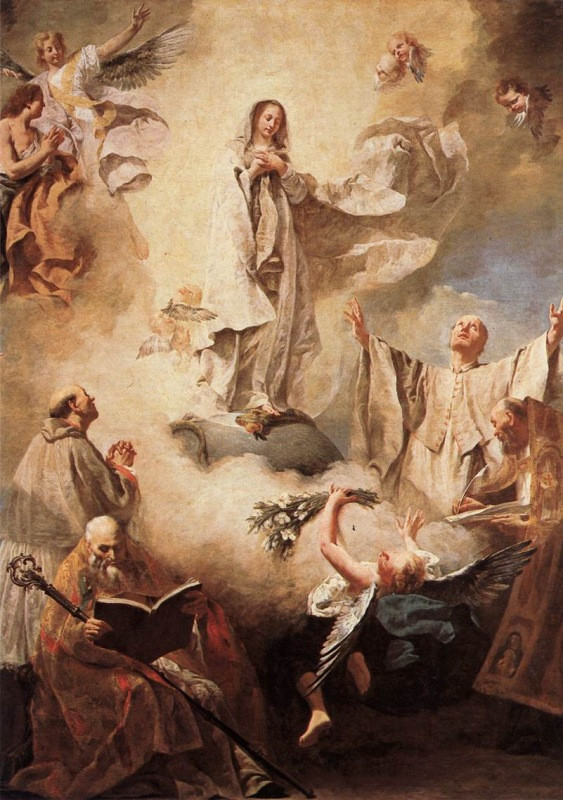
Giuseppe Angeli: Immaculate Conception (1765) Photo: Wikipedia
The dogma of the Immaculate Conception was taught by Blessed IX. Piusz proclaimed it on December 8, 1854, stating the article of faith: "From the moment of her conception, the Blessed Virgin was free from all impurities of inherited sin." On September 8, 1857, he blessed and consecrated the statue of the Immaculate Conception in Rome's Piazza di Spagna.
Four years after the formulation of the article of faith, on February 11, 1858 - as if to justify the proclamation of the dogma - a fourteen-year-old French peasant girl, Bernadette Soubirous, who was completely inexperienced in theological matters, saw a woman's figure with a brilliant brightness in the side of a cave near the Gave river near Lourdes. who introduced herself to him as: "I am the Immaculate Conception" (Que soy era Immaculada Concepcion).
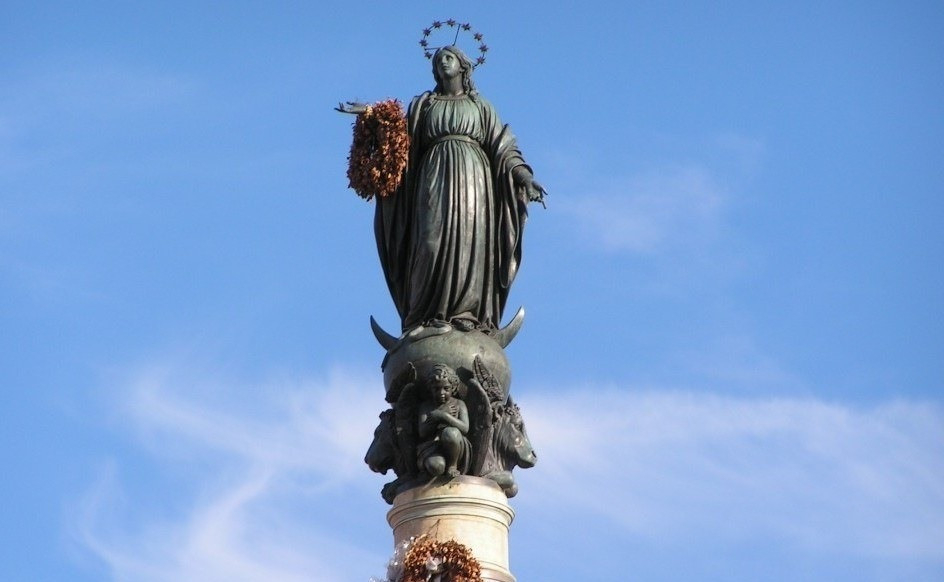
Immaculate Conception statue in Piazza di Spagna. Photo: Wikipedia
József V. Molnár, an ethnographer and ethnologist, says this about the day that falls on the Advent period:
"December 8th is one of the greatest Marian holidays: Mary, as a result of her election, was not burdened by original sin like all other people. In Mary, the sinless man in whom God was pleased appeared again on earth. Hungarians consider one of the most mystical holidays of Christianity to be one of the first. Already in the Middle Ages, this day was celebrated with great respect. The XII. The Pray code from the end of the 19th century (reign of King Béla III 1172–1197) also immortalizes it as a famous holiday. The virgin conception and birth, the freedom from original sin, were not disputed by the church fathers in our country, while they were in medieval Europe. The reason for this is to be found in our faith in Our Lady. It seems that the Creator has chosen us to guard this secret, he expects from us the fullest yearning of the Light, especially the winter solstice, before Christmas."
In honor of the Virgin Mary, Bishop Gellért recommended the name Boldogasszony to the Hungarian people. In popular belief, every Marian feast has a corresponding name with the adjective "Blessed Lady". The feast of the Immaculate Conception was formerly known as the Mother of God - or the Mother of God - and it was considered one of the greatest Marian feasts.
By December, the farmer had finished his work, and even if the autumn work was delayed due to unexpected events, all work had to be finished by December 8, the day of Our Lady of Eketiltó. At that time, it was already the time of hard frosts and the advent period began, so the work outside was finished. There were regions where the name covered something completely different, according to which married couples maintained complete physical chastity from then until Christmas, until the celebration of the birth of Jesus. On this day, women in a state of blessedness greeted Our Lady of Sowing, so that their fetuses would be preserved, just as the Blessed Virgin preserves the seeds sown in the ground.
The Immaculate Conception column stands in countless towns and villages in our country, proclaiming the purity of Mary and as a support pillar of the heavens. In Palóc villages, the support beam of the house or the master beam of the clean room of the farmhouses was called the tree of the Blessed Virgin.
Churches also bear his name. The Church of the Immaculate Conception in Fót is well-known, which was built between 1845 and 1855 in the Romanesque style based on the plans of Miklós Ybl. Next to the Vigadó in Budapest, it is the most significant work of Hungarian romantic architecture, a monument.
The Immaculate Conception Church, decorated in Baroque style, is located in Igló, a town in the former county of Szepes. Its main altar dates from 1751-1752, but the altarpiece was only created in 1856. Unfortunately, the original baroque side altars did not survive, the new ones were made by Gyula Fuhrmann, an igloo master carver, between 1884 and 1886. The paintings of the baroque pulpit from 1756 were replaced with reliefs that were carved in the igloo workshop of Ferenc Repcsik at the beginning of the 20th century - the same place where the smaller parts of the church's furnishings were made.

Bartolomé Esteban Murillo: Immaculate Conception (1660–1665) Photo: Wikipedia
On this day, despite the winter weather, the faithful make a pilgrimage to some shrines of Mary. In the past, Matyó servants made the journey from Mezőkövesd to Mátraverebély with a single man and on foot on this holiday - read in the ethnographic descriptions.
"After the apparition of Mary in Debrőd in the 1950s, the Hungarians of the Highlands visited the place of the apparition, the ruins of the medieval St. László church, in a procession for years, even if it was snowing heavily, on December 8. In front of the church, the three linden trees guarded the spring of St. László, whose water was drawn from a stone rock by our great king's galloping horse: at the tree, at the stone, at the spring, the zealous people of Felvidék performed a ceremony in the old way, but with a new faith," writes József V. Molnár in his Kalendárium.
The quietness of Advent provides an opportunity for prayer, reflection and contemplation, and for reading the Gospel. It gives an opportunity to deepen the belief that the Savior's mother has a very special role in salvation history, as it can be read in the letter to the Galatians: "when the fullness of time had come, God sent his Son, born of a woman, and he submitted himself to the law, to redeem us from the bondage of the law, that we may receive the adopted sonship.” Verse 4 4-7.
In our opening image: Immaculate Conception glass image. Source Wikipedia.
Source: felvidek.ma/Pázmaneum, Népi Kalendárium, Wikipedia
(Kornélia Berényi/Felvidék.ma)

